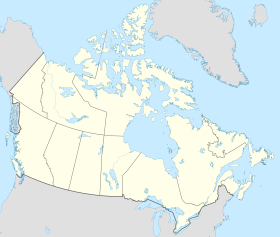
Back Brits-Columbië Afrikaans British Columbia ALS ብሪቲሽ ኮለምቢያ Amharic Bryttisc Columbia ANG كولومبيا البريطانية Arabic ܩܘܠܘܡܒܝܐ ܒܪܝܛܝܬܐ ARC بريتيش كولومبيا ARZ ব্ৰিটিছ কলম্বিয়া Assamese Columbia Británica AST ब्रिटिश कोलम्बिया AWA
British Columbia
| |
|---|---|
| Motto(s): | |
| Coordinates: 54°00′00″N 125°00′00″W / 54.00000°N 125.00000°W | |
| Country | Canada |
| Confederation | July 20, 1871 (7th) |
| Capital | Victoria |
| Largest city | Vancouver |
| Largest metro | Metro Vancouver |
| Government | |
| • Type | Constitutional monarchy |
| • Lieutenant Governor | Janet Austin |
| • Premier | David Eby (NDP) |
| Legislature | Legislative Assembly of British Columbia |
| Federal representation | Parliament of Canada |
| House seats | 42 of 338 (12.4%) |
| Senate seats | 6 of 105 (5.7%) |
| Area | |
| • Total | 944,735 km2 (364,764 sq mi) |
| • Land | 925,186 km2 (357,216 sq mi) |
| • Water | 19,548.9 km2 (7,547.9 sq mi) 2.1% |
| • Rank | Ranked 5th |
| 9.5% of Canada | |
| Population (2016) | |
| • Total | 4,648,055 [3] |
| • Estimate (2020 Q4) | 5,145,851 [4] |
| • Rank | Ranked 3rd |
| • Density | 5.02/km2 (13.0/sq mi) |
| Demonym | British Columbian[5] |
| Official languages | English (de facto) |
| GDP | |
| • Rank | 4th |
| • Total (2015) | CA$249.981 billion[6] |
| • Per capita | CA$53,267 (8th) |
| HDI | |
| • HDI (2018) | 0.930[7] — Very high (2nd) |
| Time zones | |
| most of province | UTC−08:00 (Pacific) |
| • Summer (DST) | UTC−07:00 (Pacific DST) |
| far eastern | UTC−07:00 (Mountain) |
| • Summer (DST) | UTC−06:00 (Mountain DST) |
| Postal abbr. | BC |
| Postal code prefix | |
| ISO 3166 code | CA-BC |
| Flower | Pacific dogwood |
| Tree | Western red cedar |
| Bird | Steller's jay |
| Rankings include all provinces and territories | |
British Columbia (BC) is a province in Canada. It was originally two separate colonies of Great Britain, the colony of Vancouver Island, and the colony of British Columbia. British Columbia joined the Canadian Confederation In 1871. The capital of British Columbia is Victoria, but the city with the most people is Vancouver and the city with the largest area is Abbotsford.
- ↑ Government of Canada, Natural Resources Canada. "Place names - British Columbia / Colombie-Britannique". www4.rncan.gc.ca. Retrieved April 16, 2020.
- ↑ "BC Geographical Names". apps.gov.bc.ca. Retrieved April 16, 2020.
- ↑ "Population and dwelling counts, for Canada, provinces and territories, 2016 and 2011censuses". Statistics Canada. February 8, 2017. Retrieved February 8, 2012.
- ↑ "Population by year of Canada of Canada and territories". Statistics Canada. June 14, 2018. Archived from the original on June 19, 2016. Retrieved September 29, 2018.
- ↑ According to the Oxford Guide to Canadian English Usage (ISBN 0-19-541619-8; p. 335), BCer(s) is an informal demonym that is sometimes used for residents of BC
- ↑ "Gross domestic product, expenditure-based, by province and territory (2015)". Statistics Canada. November 9, 2016. Retrieved January 26, 2017.
- ↑ "Sub-national HDI - Subnational HDI - Global Data Lab". globaldatalab.org. Retrieved June 18, 2020.


